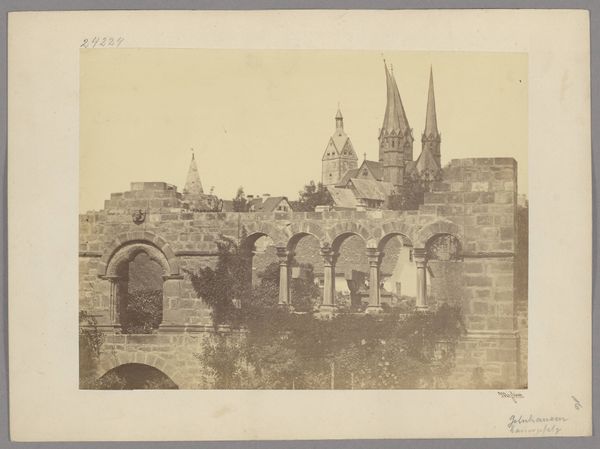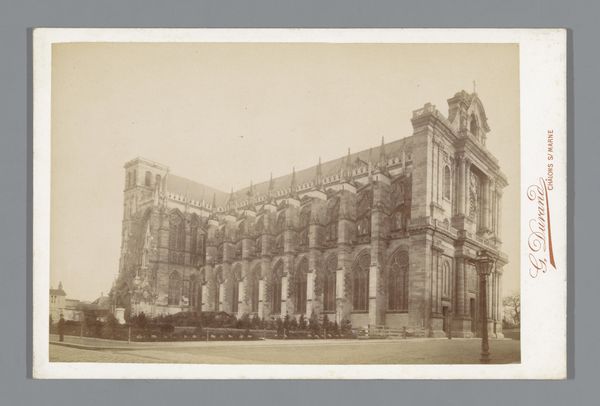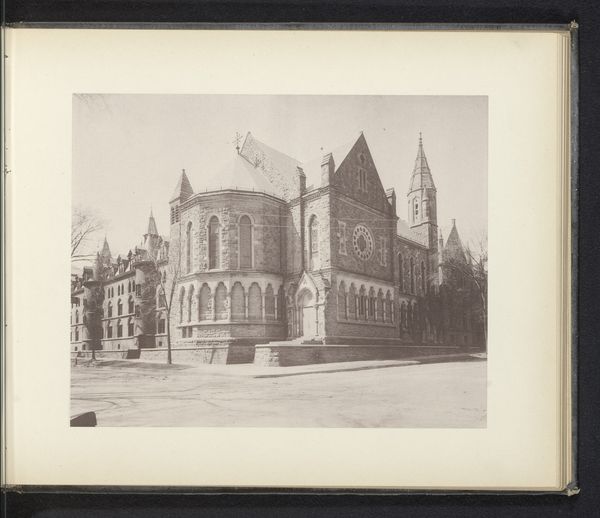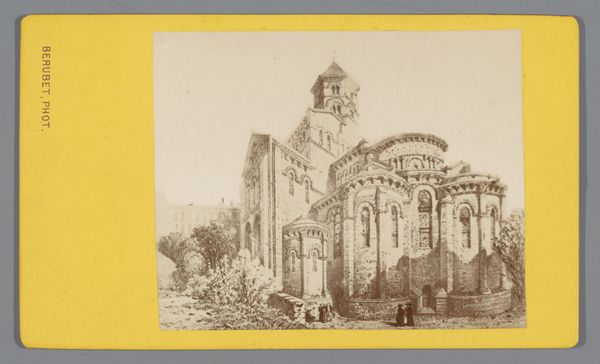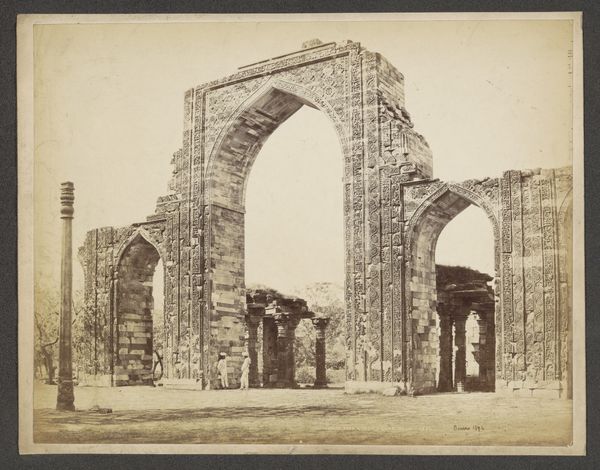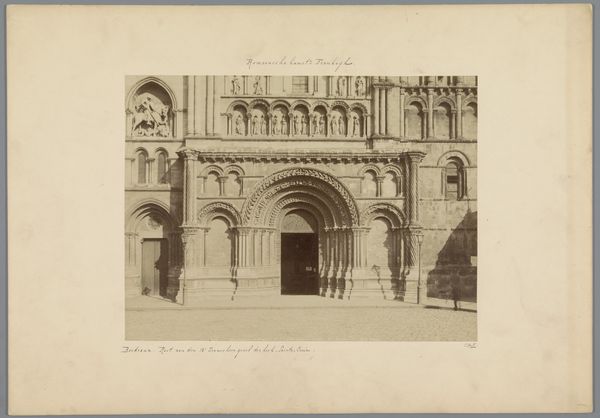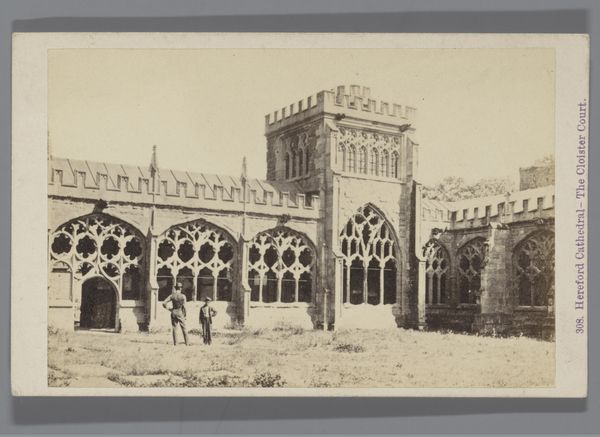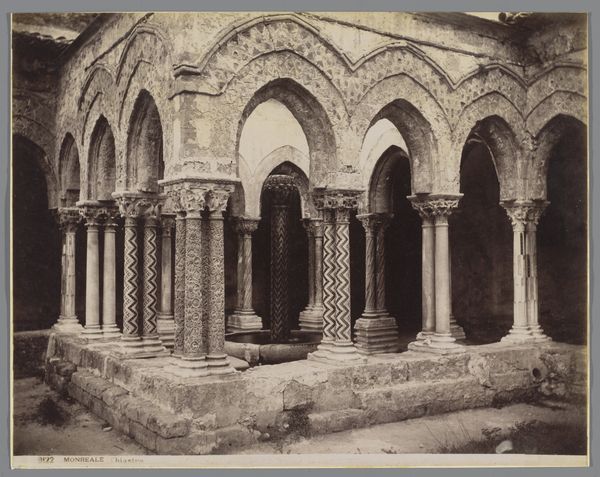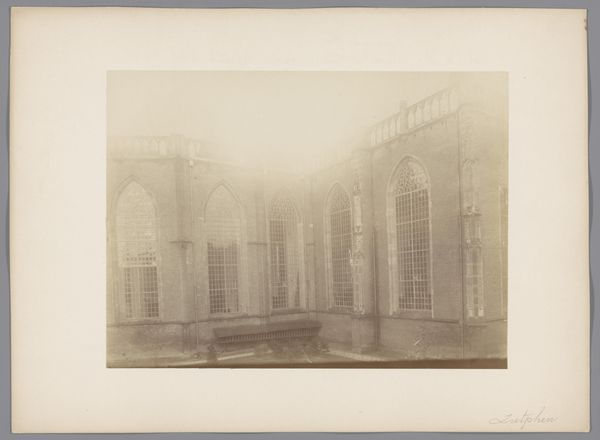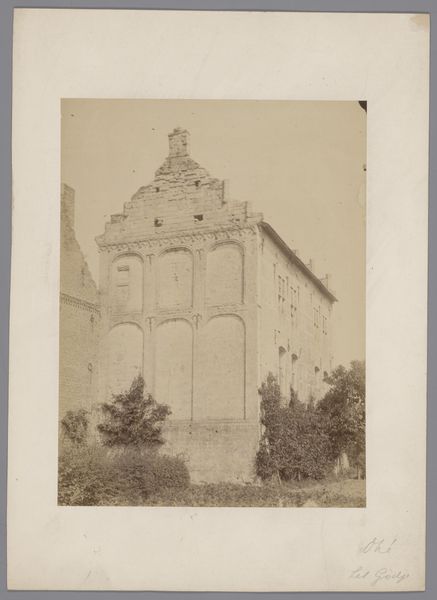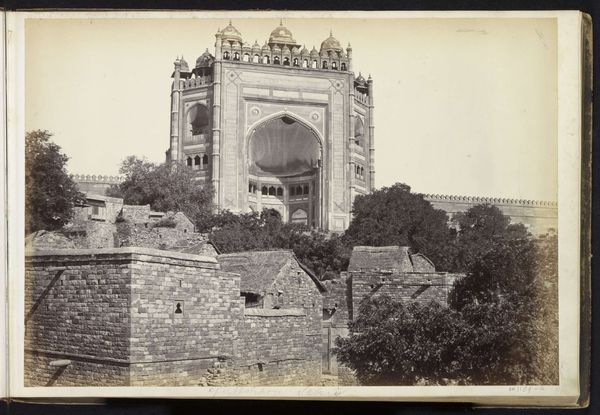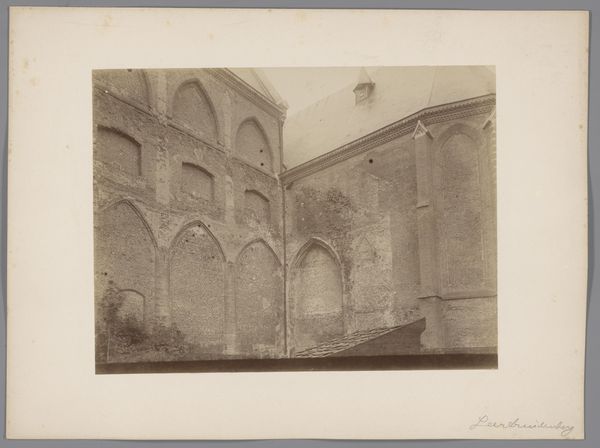
Dimensions: height 212 mm, width 275 mm
Copyright: Rijks Museum: Open Domain
Editor: This photograph, taken sometime between 1880 and 1910 by Adolphe Giraudon, captures the Église Saint-Nazaire in Carcassonne. The Gothic architecture feels imposing, even in a landscape format. What's your take? What do you see when you look at this? Curator: Well, right away I’m struck by the light. Notice how it seems to almost caress the stone? For me, it’s about that conversation between the enduring strength of Gothic architecture and the fleeting, ethereal quality of light. Does it perhaps invite reflection on permanence versus the ephemeral, the sacred against the mundane? Editor: That’s a really lovely way to put it! The contrast you mention makes it more…human, somehow. But do you think the monochrome print medium adds or subtracts from this feeling? Curator: I think it absolutely enhances it. The monochromatic tones, particularly in early photography like this, evoke a sense of timelessness. We’re not just seeing a building; we're witnessing a captured moment from a bygone era. What is that process of aging or aesthetic modification adding for us as viewers? Editor: That's interesting; I hadn’t considered it that way. So, it’s less about precise visual information and more about atmosphere? Curator: Precisely! Giraudon uses the sharp architectural lines against the softened backdrop to craft a kind of dreamscape. In a way it also demonstrates what our brains add versus what the camera captured. Does it change what that place might "mean" if we saw it in full, sharp, hi-definition colour? It also makes you think about what endures, and what fades, from a civilisation. Editor: Wow, I will never look at old photographs the same way again! Thanks for illuminating that. Curator: My pleasure. There’s magic hiding in every photograph if we allow ourselves to look a little deeper.
Comments
No comments
Be the first to comment and join the conversation on the ultimate creative platform.
